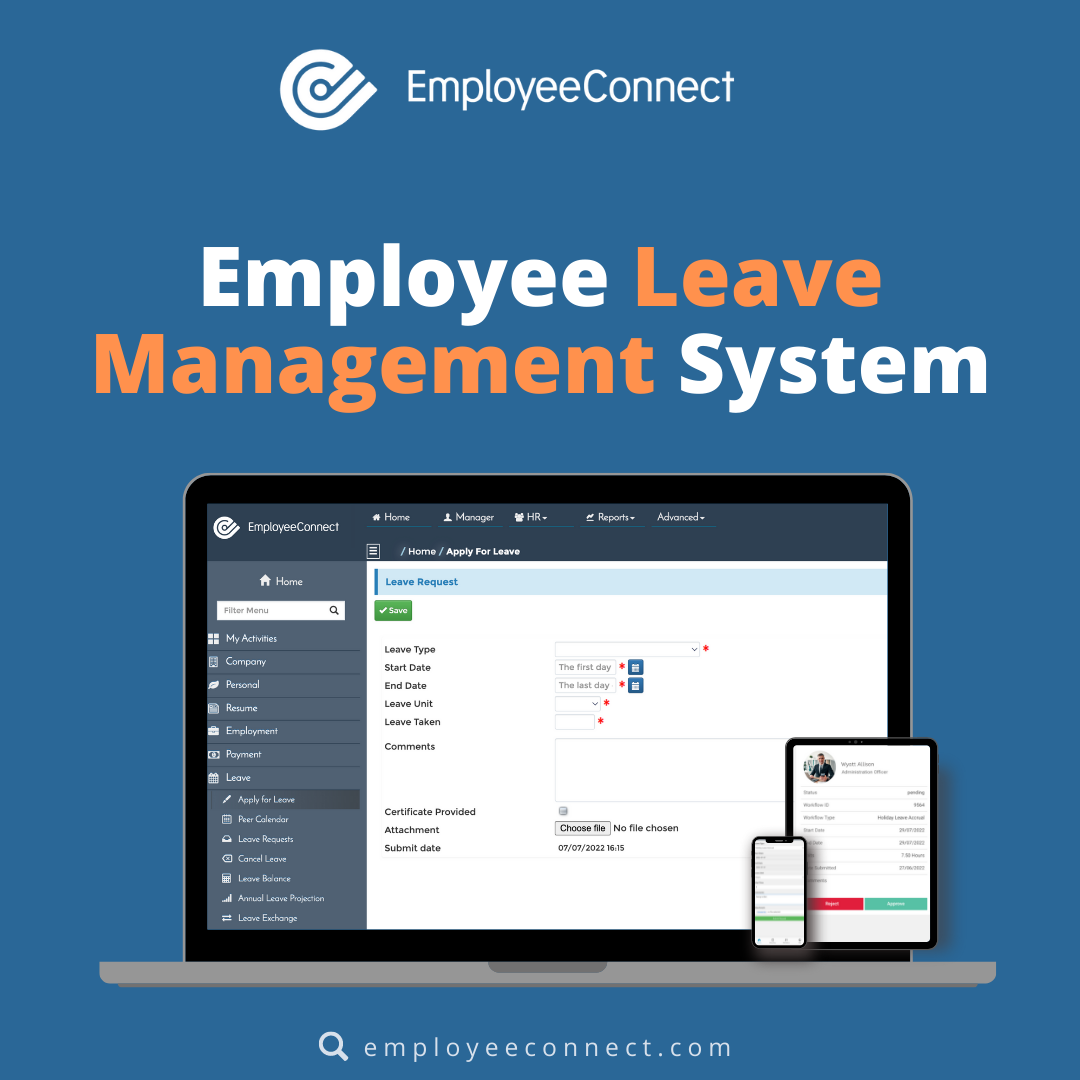
How to Deal with Employee Absenteeism in the Workplace?
Unscheduled and unattended employee absenteeism can adversely affect workers’ productivity and organisational outcomes. Rebuking or chastising employees isn’t always a favorable option. Employees are human beings, too; restricting their personal life doesn’t yield optimal results.
That’s why the resolution of absenteeism at work only lies in well-structured regulations and effective communications.
Strategic crafting of required policies plays a vital role. Before diving into nitty-gritty details of employee absenteeism, let’s first unveil its basics.
What is Absenteeism Meaning?
Absenteeism emerges when an employee or worker doesn’t shop up to work on a regular basis or excessive absenteeism. All humans have some kind of health, personal, and family life responsibilities to fulfill. These things don’t count for absenteeism as long as these become regular last-minute calls.
For instance, if an employee communicates unavailability due to a health issue or excuses himself due to a flat tire for being late and call in sick. This isn’t absenteeism. But, if these aforementioned things turn into a pattern, absenteeism comes into play.
Employee absenteeism starts impacting the company’s bottom line resulting in multiple losses.
The Impact of Absenteeism in the Workplace
The impacts of employee’s absent from work are multi-dimensional. Your workplace isn’t comprised of a single individual. So, multiple unnoticed happenings occur with absenteeism which negatively strikes the company’s output. The absenteeism include;
Impacts on Individual Performance
A simple rule; if someone absence from work quite often, a lot of unscheduled absences, or even chronic absenteeism, then he is likely to lost productivity— exceptions do exist. If any employee isn’t regular and committed to his work, soon he’ll be left out in a competitive workplace.
If this happened, the employer’s rebuking attitude might further stress him. Identification of root cause and strategic communication may yield better outcomes.
Impacts on Team Productivity
Teams are highly dependent on fellow workers to execute any project successfully. Absenteeism at work means on-site employees have to work even harder. This equates to lesser team productivity as they have to work extra shifts to cover losses caused by employee absence.
Research by SHRM (Society of Human Resource Management) reveals that 47% of absenteeism is covered by overtime. This definitely compromises the work progress. Employees are found to be 29.5% less productive when covering such issues.
Impacts on Overall Profit Margins
Its impact on overall organisational profits is bi-dimensional. Firstly, employers need to pay extra for overtime shifts or contracts. Secondly, absenteeism of employees without any replacement can halt the projected growth.
For instance, if there’s a technician for operating a particular machine, his absence can multiply whole day’s progress with zero.
Impact on Employees’ Morale
We all are human beings having private lives outside the office. Everyone has personal life obligations to fulfill. When employees find out that absenteeism is repercussions-free, everyone looks to find a way for it. This can breed bitterness and severance among employees.
In a nutshell, absenteeism can result in substantial losses resulting from low morale, productivity losses, and temporary high labor costs.
The Causes and the Cost of Absenteeism
The causes of absenteeism can vary from scenario to scenario. The majority of these reasons are legitimate in nature. Some most comment causes include, but aren’t limited to;
Moral Causes of Employee Absenteeism
1. Excessive Stress and Burnout
Personal life stressors usually have a significant impact on employees. If they combine with stressful on-site meetings, substantial workloads, and unrewarded operations, results can put off employees from work.
2. Depression
Center for Disease Control and Prevention (CDC) states about 20 percent of the time; depression affects an employee’s ability to finish any physical job. It also drags down their cognitive performance about 35 percent of the time.
Depression is the leading cause of absenteeism among Americans, says NIMH.
3. Job Hunting
When workers don’t secure their desired finances or mental satisfaction, then they look for alternative opportunities. Thus, job hunting, interviews, and other related formalities keep them out of work.
4. Disconnection with Company’s Environment
Due to certain obvious reasons like disengagement with employer or fellow workers, absenteeism is reported. This drops workers’ morale making him feel alone, and a lack of motivation grows.
5. Harassment and Bullying
Employees who face frequent bullying and harassment prefer to stay away from the workplace. This bullying can be either from coworkers or even the team leaders.
Technical Causes of Employee Absenteeism
1. Healthcare of Near Ones
When caregivers don’t show up for multiple reasons, employees ask for leave from their jobs to take care of elders or children at home could be one of the reason employees miss work. Especially healthcare of older parents is one of the main reasons behind it.
2. Illness & Injuries
Medical concerns are one of the leading reasons quoted by employees to ask for a sick leave. These include illnesses and injuries. In actuality, these aren’t the real cause of employee absence in most cases.
Seasonality also plays a vital role, as, during the winter season, a spike is often recorded. On or off-field severe injuries also result in an increased absenteeism rate.
Absenteeism Costs for Business
The actual costs of higher absenteeism rates are usually misunderstood. A Gallup survey quoted 84 billion dollars’ worth of productivity loss in the U.S. in a single year. Though these are hard to calculate, we can divide them into two types to get an idea of them;
Direct Costs
1. Time Loss
Cumulative time loss in comparison to a normal full-time position can give an idea of average financial compromise due to absenteeism.
2. Loss In Salary
An absent employee can be two times more expensive than the normal one. Firstly, in terms of salary, he’s getting, and secondly, onboarding alternative option.
Indirect Costs
1. Management Cost
Companies usually hire additional administrative staff to manage employee absences and to ensure disciplinary actions.
2. Productivity and Quality Loss
Onboarding a lesser trained and unfamiliar person can affect productivity. Firstly, every person needs some time to absorb the environment. Additionally, safety issues are associated with the replacement option.
How to Deal with Absenteeism Employee
We can’t eradicate absenteeism. We all have multiple obligations to fulfill outside the sphere of office. In addition, emergencies aren’t welcomed, but these things can’t be avoided. That’s why we have developed some practical strategies to reduce employee absenteeism rate for a better time and attendance management;
Employee Attendance Policy Should be in Place
There should be clear policies or employee handbook in place explaining excusable causes of absence. These preemptive measures are marginally better than punitive programs. Chastising employees may increase presenteeism, but lack of interest grows.
Presenteeism is another kind of absenteeism that ensures physical presence without employee engagement and productivity.
Develop Team Culture and Offer Collective Purpose
Employee cooperation should be promoted. Everyone should consider themselves an important pillar of the team and project.
Employee connection should be deepened with emotional attachment with each other. This motivates them to work harder and facilitate coworkers in emergencies.
Relational Contracts
Mutual trust among team, employee, and employer is mandatory to equate to higher productivity. A relational contract among the concerning parties keeps them motivated on their own terms.
Offer Work-from-Home Policies
There should be proper flexible work policies for exceptions. If an employee is under some serious issue, he can later join the team by accomplishing the task at ease. In addition, ample paid time off (PTO) gives the employee the required mental satisfaction to stay motivated.
Bottom Line— Simplify the Procedure
Asking employees to write an application and get it signed from multiple desks is odd and time-consuming. Absence management application and approval should be simplified, encouraging employees to communicate better.
You can employ tech partners like EmployeeConnect, which not only facilitates the overall HR management but also assist in reducing absenteeism.
Just book a free demo to see your business grow exponentially!

